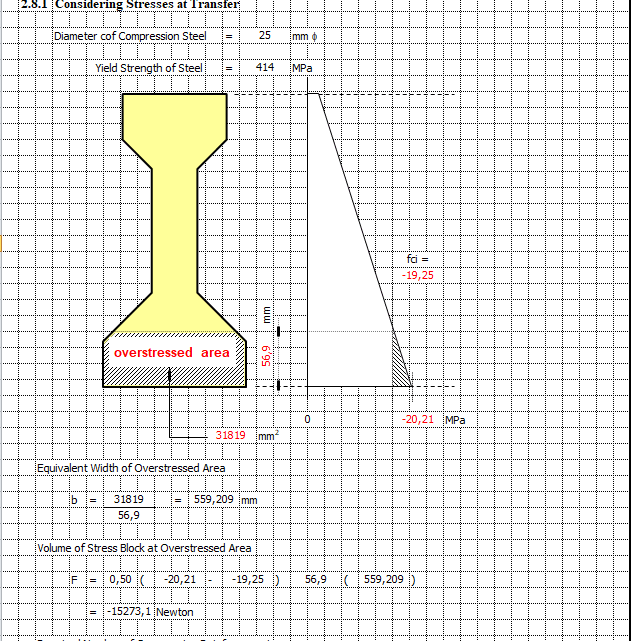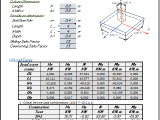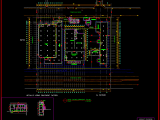
Computation Of Mild Steel Reinforcement Requirements Spreadsheet
18 July 2025 Off By The Engineering CommunityTable of Contents
Computation Of Mild Steel Reinforcement Requirements Spreadsheet
In the world of construction, the strength and longevity of a structure often lie hidden within its concrete core. This is where mild steel reinforcement, a fundamental yet often overlooked component, plays a pivotal role. For builders, contractors, and even ambitious DIY enthusiasts, understanding the nuances of this essential material is key to a successful and durable project. This comprehensive guide will delve into the world of mild steel reinforcement, exploring its properties, applications, and how it stacks up against other types of rebar, helping you make informed decisions for your next construction endeavor.
What Exactly is Mild Steel Reinforcement?
Mild steel reinforcement, often referred to as rebar, is a type of carbon steel with a relatively low carbon content, typically ranging from 0.16% to 0.29%.[1] It is produced through a process that involves heating and rolling the steel into long bars.[2] These bars often have a plain, round surface, which distinguishes them from their high-yield strength counterparts that feature deformations or ribs.[3][4]
The defining characteristic of mild steel rebar lies in its impressive ductility and weldability.[5][6] Its composition makes it easy to bend and shape on-site without compromising its structural integrity, a significant advantage for projects with unique design requirements.[4]
Decoding the Properties of Mild Steel Rebar
To truly appreciate the role of mild steel reinforcement, it’s essential to understand its key properties. These characteristics dictate its suitability for various construction applications.
Key Properties of Mild Steel Reinforcement:
| Property | Description | Significance in Construction |
| Ductility | The ability to be drawn out into a thin wire or deformed without losing toughness. | Allows for easy bending and shaping on-site to fit specific structural needs.[4] |
| Weldability | The ease with which it can be welded to other steel components. | Facilitates the creation of strong and reliable connections within the reinforcement cage.[6] |
| Characteristic Strength | The minimum yield strength the steel is expected to have. For mild steel, this is typically around 250 N/mm².[7] | This determines its load-bearing capacity and is a crucial factor in structural design.[8] |
| Low Carbon Content | Generally between 0.16% and 0.29%. | Contributes to its ductility and weldability but results in lower tensile strength compared to high-carbon steels.[1][9] |
| Compatibility with Concrete | Similar thermal expansion coefficient to concrete. | This ensures that the bond between the steel and concrete remains strong during temperature fluctuations, preventing internal stresses and cracking.[10][11] |
It’s also important to note that mild steel reinforcement is governed by specific standards, such as BS 4449 in the UK, which designates Grade 250 for plain round bars, and IS 1786 in India, which includes the Fe 250 grade.[3][7][8][12] Adherence to these standards ensures the quality and performance of the rebar.
Where is Mild Steel Reinforcement Used?
The versatility of mild steel reinforcement makes it a popular choice for a wide range of construction projects, particularly in the residential and small-scale commercial sectors.[6] Its cost-effectiveness and ease of use make it an attractive option for projects with budget constraints.[2]
Common Applications in Residential Construction:
-
Slabs: Mild steel rebar is often used to provide tensile strength to concrete slabs, preventing cracking and ensuring a durable surface.[11]
-
Beams: In smaller beams that don’t bear exceptionally heavy loads, mild steel can be an economical reinforcement choice.[13]
-
Columns: For columns in low-rise buildings, mild steel can provide the necessary reinforcement to handle compressive loads.[13]
-
Foundations: It is commonly used in the foundations of residential buildings to enhance their stability and load-bearing capacity.[13]
Mild Steel vs. The Alternatives: A Comparative Look
Choosing the right type of reinforcement is critical to the success of any construction project. Here’s how mild steel compares to other common types of rebar:
| Rebar Type | Key Features | Best For |
| Mild Steel Rebar | Low cost, high ductility, excellent weldability, lower tensile strength. | Small to medium-sized residential and commercial projects where cost is a major factor and extreme strength is not required.[6][14] |
| High-Yield Strength Deformed (HYSD) Bars | Higher tensile strength, ribbed surface for better concrete bond. | Larger structures requiring greater load-bearing capacity, such as high-rise buildings and bridges.[15] |
| Thermo-Mechanically Treated (TMT) Bars | High strength combined with good ductility, superior bonding with concrete. | A wide range of applications, including those in seismic zones, due to their enhanced properties.[4] |
| Epoxy-Coated Rebar | Provides a protective barrier against corrosion. | Structures exposed to corrosive environments like marine structures or bridges where de-icing salts are used. However, the coating can be damaged during handling.[1][16] |
| Galvanized Rebar | Coated with zinc for corrosion resistance, more durable than epoxy coating. | Applications where moisture and corrosion are a concern, offering a longer service life than uncoated bars.[5][16] |
The Pros and Cons of Mild Steel Reinforcement
Like any building material, mild steel rebar has its distinct advantages and disadvantages.
Advantages:
-
Cost-Effective: It is generally more affordable than other types of reinforcement, making it a budget-friendly option for many projects.[17]
-
Ease of Use: Its ductility makes it easy to cut and bend on-site, saving time and labor costs.[11]
-
Weldability: The ability to be easily welded allows for straightforward fabrication and assembly of the reinforcement cage.[6]
-
Recyclability: Steel is a highly recyclable material, making mild steel rebar a more sustainable choice in construction.[17]
Disadvantages:
-
Lower Tensile Strength: Compared to high-yield strength bars, mild steel has a lower capacity to withstand tensile forces. This needs to be accounted for in the structural design, often by using larger diameter bars or closer spacing.[10][14]
-
Susceptibility to Corrosion: Mild steel is prone to rusting if exposed to moisture and air. This can be mitigated by ensuring adequate concrete cover, which acts as a protective barrier.[18]
-
Poor Bond with Concrete: The plain surface of mild steel bars provides a weaker bond with concrete compared to deformed bars. This can be addressed through proper design and detailing, such as providing hooks at the ends of the bars.[19]
Best Practices for Using Mild Steel Reinforcement in Residential Projects
To maximize the benefits of mild steel rebar and ensure a safe and durable structure, it’s crucial to follow best practices during selection, storage, and placement.
-
Proper Selection: Always choose rebar that complies with relevant standards like BS 4449 or IS 1786.[7][8] Ensure the grade (e.g., Fe 250) and diameter are appropriate for the specific structural element as per the design drawings.[13]
-
Correct Storage: Store rebar off the ground on a raised platform to prevent contact with moisture and soil, which can lead to corrosion.[13]
-
Accurate Placement: The positioning of the rebar within the concrete formwork is critical. Ensure the correct concrete cover is maintained to protect the steel from corrosion. Use spacers and chairs to hold the bars in their designated positions.[18]
-
Secure Tying: Tie the intersections of the rebar securely with binding wire to create a stable reinforcement cage that won’t shift during the concrete pour.[18]
The Sustainable Choice
In an era of increasing environmental awareness, the sustainability of building materials is a significant consideration. Steel is one of the most recycled materials in the world, and mild steel rebar is no exception.[17] Choosing steel reinforcement contributes to a circular economy, reducing the demand for raw materials and minimizing waste.
The Final Word
Mild steel reinforcement remains a cornerstone of modern construction, particularly for residential and smaller-scale projects. Its affordability, ease of use, and versatility make it a practical and reliable choice for builders and contractors. While it’s essential to be aware of its limitations, such as lower tensile strength and susceptibility to corrosion, these can be effectively managed through proper design and construction practices. By understanding the properties and applications of mild steel rebar, you can build with confidence, knowing you are using a time-tested material that provides the essential strength to bring your structural designs to life.


